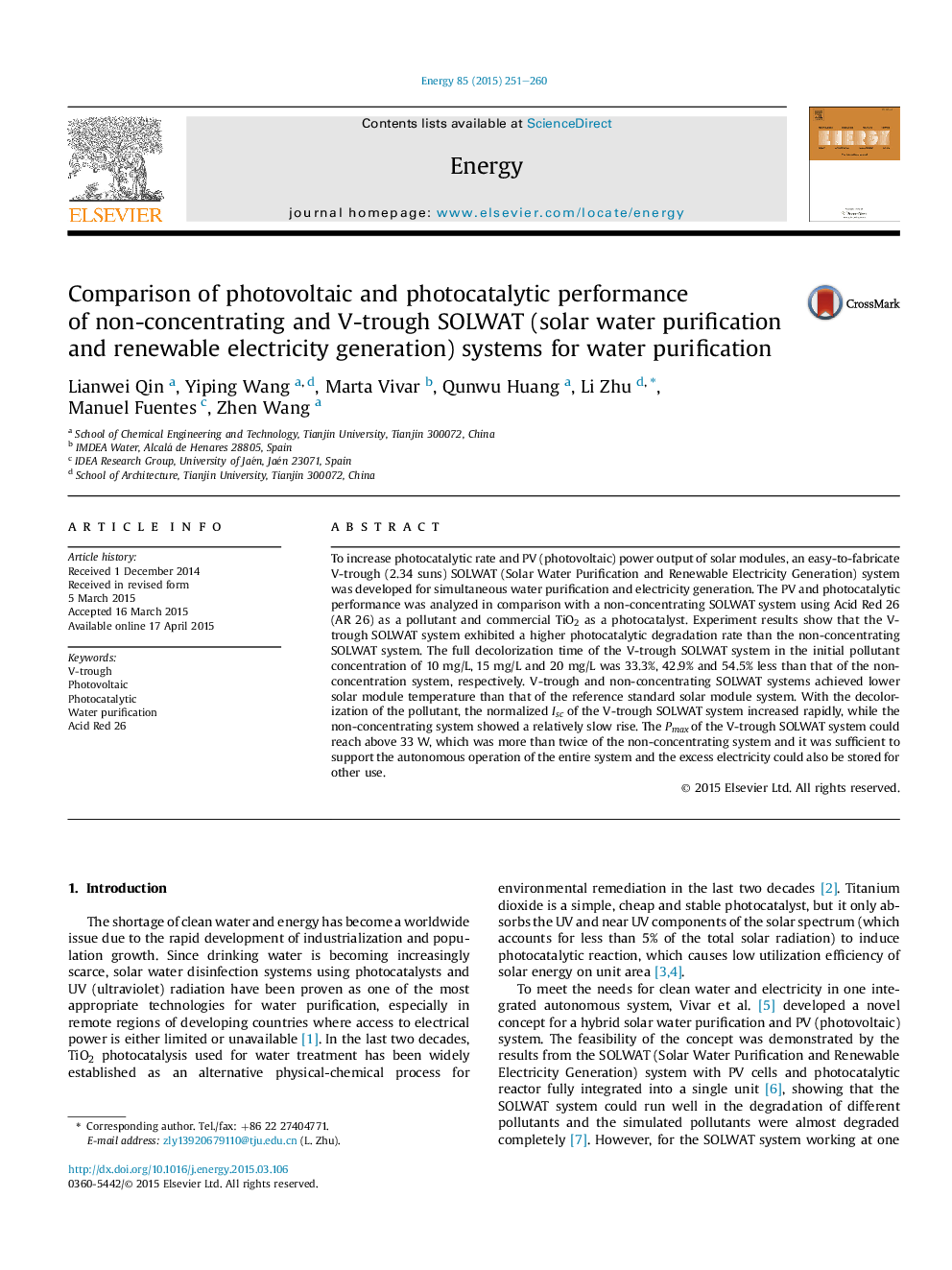| Article ID | Journal | Published Year | Pages | File Type |
|---|---|---|---|---|
| 1732074 | Energy | 2015 | 10 Pages |
•V-trough SOLWAT system was developed for water purification and power generation.•V-trough SOLWAT system can be self-sufficient with excess power output.•Non-concentrating and V-trough SOLWAT systems are studied comparatively.•V-trough SOLWAT system owns a very high photocatalytic reaction rate.•Solar module of V-trough SOLWAT system has low working temperature.
To increase photocatalytic rate and PV (photovoltaic) power output of solar modules, an easy-to-fabricate V-trough (2.34 suns) SOLWAT (Solar Water Purification and Renewable Electricity Generation) system was developed for simultaneous water purification and electricity generation. The PV and photocatalytic performance was analyzed in comparison with a non-concentrating SOLWAT system using Acid Red 26 (AR 26) as a pollutant and commercial TiO2 as a photocatalyst. Experiment results show that the V-trough SOLWAT system exhibited a higher photocatalytic degradation rate than the non-concentrating SOLWAT system. The full decolorization time of the V-trough SOLWAT system in the initial pollutant concentration of 10 mg/L, 15 mg/L and 20 mg/L was 33.3%, 42.9% and 54.5% less than that of the non-concentration system, respectively. V-trough and non-concentrating SOLWAT systems achieved lower solar module temperature than that of the reference standard solar module system. With the decolorization of the pollutant, the normalized Isc of the V-trough SOLWAT system increased rapidly, while the non-concentrating system showed a relatively slow rise. The Pmax of the V-trough SOLWAT system could reach above 33 W, which was more than twice of the non-concentrating system and it was sufficient to support the autonomous operation of the entire system and the excess electricity could also be stored for other use.
